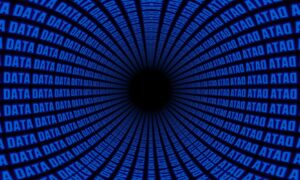Introduction
Blockchain technology has revolutionized how we store and transfer data, making it secure, transparent, and tamper-proof. This has made it a game-changer in various industries, including finance, healthcare, and supply chain management. However, with the increasing popularity of Blockchain comes the challenge of storing and managing massive amounts of data. That’s where Snowflake comes in.
Snowflake is a cloud-based data warehousing platform that allows organizations to easily store, analyze, and manage large amounts of data. With its cutting-edge technology and advanced data management features, Snowflake has become the go-to solution for many businesses looking to store and analyze data efficiently.
In this article, we’ll explore the world of Blockchain, how it generates data, and how Snowflake can store and analyze this data for transactional analysis. Whether you’re a Blockchain enthusiast or a data analyst, this article will provide valuable insights on leveraging Snowflake’s power to make sense of your Blockchain data. So, buckle up and learn how to use Snowflake to store Blockchain data for transactional analysis.
Blockchain Technology and Its Data RequirementsExplanation of Blockchain Transactions:
Blockchain transactions refer to the exchange of digital assets on a decentralized ledger. Each transaction is recorded and linked to the previous one, forming a chain of blocks that cannot be altered or deleted. This creates a secure and transparent record of all transactions.
Types of Blockchain Data to Be Stored:
The types of data that need to be stored in a Blockchain system include transaction data, such as the amount transferred and the parties involved, and metadata, such as the time and date of the transaction. In addition, smart contracts, self-executing agreements with the terms of the agreement directly written into code, also need to be stored in the Blockchain.
Challenges in storing Blockchain Data:
Storing Blockchain data presents several challenges, including the sheer volume of data generated, the need for real-time access to the data, and the need to maintain the integrity and security of the data. Additionally, traditional database systems struggle to cope with the decentralized nature of Blockchain and the need to store large amounts of data in a distributed manner. These challenges can be overcome by using a data warehousing solution like Snowflake, designed to handle large amounts of data and enable real-time data analysis.
How to use Snowflake for Storing Blockchain Data
-
Setting up a Snowflake Account:
To get started with Snowflake, you need to create a Snowflake account. This can be done by visiting the Snowflake website and following the simple registration process. Once you have created an account, you can log in to the Snowflake web interface and use the platform.
-
Creating a database and tables in Snowflake:
After logging into Snowflake, the next step is to create a database and tables to store your Blockchain data. Snowflake provides a simple and user-friendly interface to create databases and tables, making it easy for users to get started. You can also use SQL to create tables and databases in Snowflake.
-
Importing Blockchain Data into Snowflake:
Once you have created a database and tables in Snowflake, you can import your Blockchain data into the platform. Snowflake supports various methods for importing data, including bulk loading, data streaming, and using the Snowflake Connector for Apache Spark. You can choose the method that best suits your needs and start importing your data into Snowflake.
-
Querying and Analyzing the Blockchain Data in Snowflake:
After importing your Blockchain data into Snowflake, you can start querying and analyzing it. Snowflake provides an SQL-based interface to query and analyze your data, making it easy for users to get insights from their data. You can also use various data visualization tools to better understand your Blockchain data, including charts, graphs, and dashboards. With Snowflake, you can quickly and easily analyze your Blockchain data and gain valuable insights into your transactions.
If you are interested in learning the Snowflake certification course, then enroll in Snowflake Online Training
Transactional Analysis with Snowflake
-
Overview of Transactional Analysis:
Transactional analysis is the process of analyzing individual transactions to understand patterns and trends in the data. In the context of Blockchain, transactional analysis is used to understand the flow of digital assets and the relationships between different parties involved in the transactions.
-
Techniques for analyzing Blockchain transactions in Snowflake:
Snowflake provides various techniques for analyzing Blockchain transactions, including SQL queries, data warehousing, and data visualization. With SQL, you can extract data from the Blockchain database and perform various operations, such as filtering, grouping, and aggregating, to gain insights into your transactions. Snowflake’s data warehousing capabilities make it easy to store and analyze large amounts of data, allowing you to process billions of transactions in real time.
-
Visualizing Blockchain Data using Snowflake:
Snowflake also provides data visualization tools to help you understand your Blockchain data. With Snowflake, you can create charts, graphs, and dashboards to visualize the flow of transactions and identify trends and patterns in the data. This makes it easier to understand the relationships between different parties involved in the transactions and to gain insights into the flow of digital assets.
-
Real-life use-cases of Snowflake for Blockchain Transactional Analysis:
Snowflake is used by many organizations to perform transactional analysis on Blockchain data, including financial institutions, supply chain management companies, and healthcare organizations. For example, financial institutions use Snowflake to monitor the flow of digital assets and detect fraudulent transactions, while supply chain management companies use it to track the movement of goods and monitor supply chain efficiency. These real-life use cases demonstrate the versatility and power of Snowflake for Blockchain transactional analysis.
Advantages of Using Snowflake for Blockchain Data
-
Performance and Scalability:
Snowflake provides excellent performance and scalability for storing and analyzing Blockchain data. With Snowflake, you can store and analyze massive amounts of data with ease, thanks to its scalable architecture and ability to process billions of transactions in real time. This makes Snowflake an ideal solution for organizations dealing with large amounts of Blockchain data.
-
Security and Data Management:
Snowflake places a strong emphasis on security and data management, ensuring that your Blockchain data is protected and secure at all times. Snowflake provides multiple layers of security, including encryption, authentication, and access controls, to ensure that your data is protected against unauthorized access. Additionally, Snowflake provides robust data management capabilities, including data backup and recovery, data archiving, and data lifecycle management, to help you manage your Blockchain data efficiently.
-
Cost-effectiveness:
Snowflake provides cost-effective solutions for storing and analyzing Blockchain data, making it an attractive option for organizations of all sizes. Snowflake’s flexible pricing model allows you to only pay for the resources you consume, making it a cost-effective solution for organizations that need to store and analyze large amounts of data.
-
Ease of use and Integration:
Snowflake provides an easy-to-use interface and integrates with a wide range of tools and platforms, making it easy for organizations to get started with Snowflake. Whether you are a data analyst, data scientist, or developer, Snowflake provides the tools you need to store and analyze your Blockchain data with ease. Additionally, Snowflake integrates with popular tools, such as Apache Spark, Tableau, and Power BI, making it easy to integrate Snowflake into your existing data infrastructure.
Conclusion
In conclusion, Snowflake is an excellent solution for storing and analyzing Blockchain data for transactional analysis. With its scalability, security, cost-effectiveness, and ease of use, Snowflake provide a comprehensive solution for organizations dealing with large amounts of Blockchain data. We recommend Snowflake to organizations looking to store and analyze their Blockchain data efficiently and effectively.
As the demand for Blockchain technology continues to grow, the need for effective solutions for storing and analyzing Blockchain data will also increase. Snowflake is well-positioned to meet this demand with its powerful data warehousing and analysis capabilities. In the future, we expect to see Snowflake continue to evolve and expand its capabilities for storing and analyzing Blockchain data, making it an increasingly important tool for organizations dealing with Blockchain data.
Author Bio:
Zaid is a Digital Marketer, and a passionate writer, who is working with Tekslate, a top global online training provider. He also holds in-depth knowledge of IT and demanding technologies such as Business Intelligence, Salesforce, Cybersecurity, Software Testing, QA, Data Analytics, Project Management and ERP tools, etc.



































